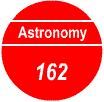
|
WEB SYLLABUS Dept. Physics & Astronomy University of Tennessee |
| Java Credit: Michael Ewert |

|
WEB SYLLABUS Dept. Physics & Astronomy University of Tennessee |
| Java Credit: Michael Ewert |
|
|
|
|||
|
|
|
|||
|
|
|
|
| TEXTBOOKS:
"Astronomy:
From the Earth to the Universe" (Sixth Edition),
by Jay M. Pasachoff and Online Journey Through Astronomy: The Solar System by Michael Guidry, Margaret Riedinger and Frank Edward Barnes (Student Companion by Kevin Lee) |
| Stars, Galaxies, and the Universe | |
|---|---|
| Ch 22: The Sun | Ch 23: Solar Activity and The Earth |
| Ch 24: Stars and Their Spectra | Ch 25: Stellar Distances and Motions |
| Ch 26: Doubles, Variables and Clusters | Ch 27: The Birth, Youth and Middle Age of Stars |
| Ch 28: The Aging and Death of Stars Like the Sun | Ch 29: Supernovae |
| Ch 30: Pulsars and Neutron Stars | Ch 31: Black Holes |
| Ch 32: The Structure of the Milky Way Galaxy | Ch 33: The Interstellar Medium |
| Ch 34: Types of Galaxies | Ch 35: Galaxies and the Expanding Universe |
| Ch 36: Quasars | Ch 37: Cosmology |
| Ch 38: The Past and Future of the Universe |
 Some Web Links
Some Web Links
of Interest
for
Astronomy Students
If you are not familiar with the use of the World Wide Web, here is a comprehensive introduction to the use of the Web in education. (This site is advertised for K-12 education, but the content is relevant for Web educational issues at all levels.)
 Some Newsgroups
Some Newsgroups
of Interest for
Astronomy
Students
If you are not familiar with how to use newsgroups, see the discussion in the webTeacher Tutorial. An FAQ is a list of Frequently Asked Questions (and their answers) for a newsgroup.